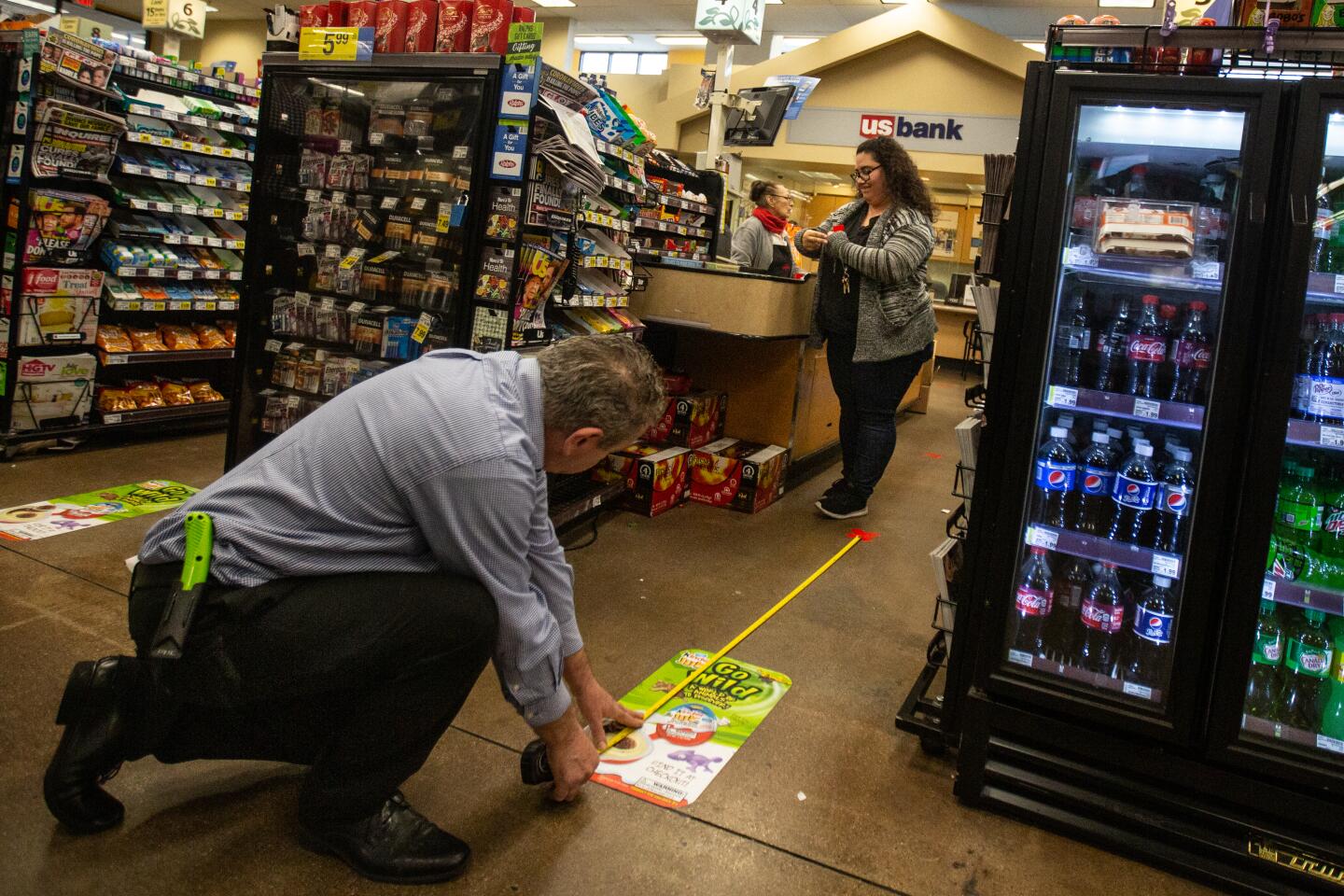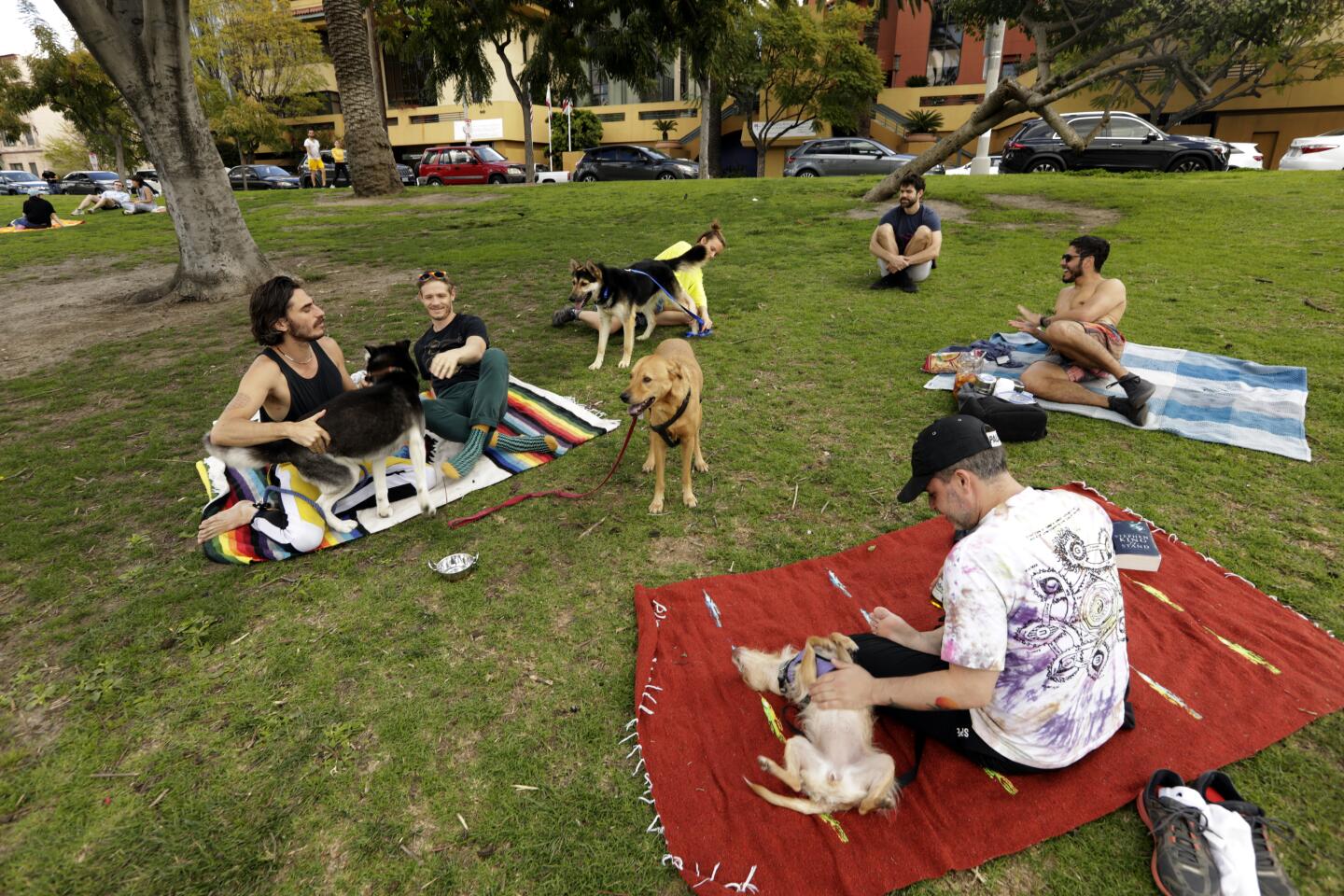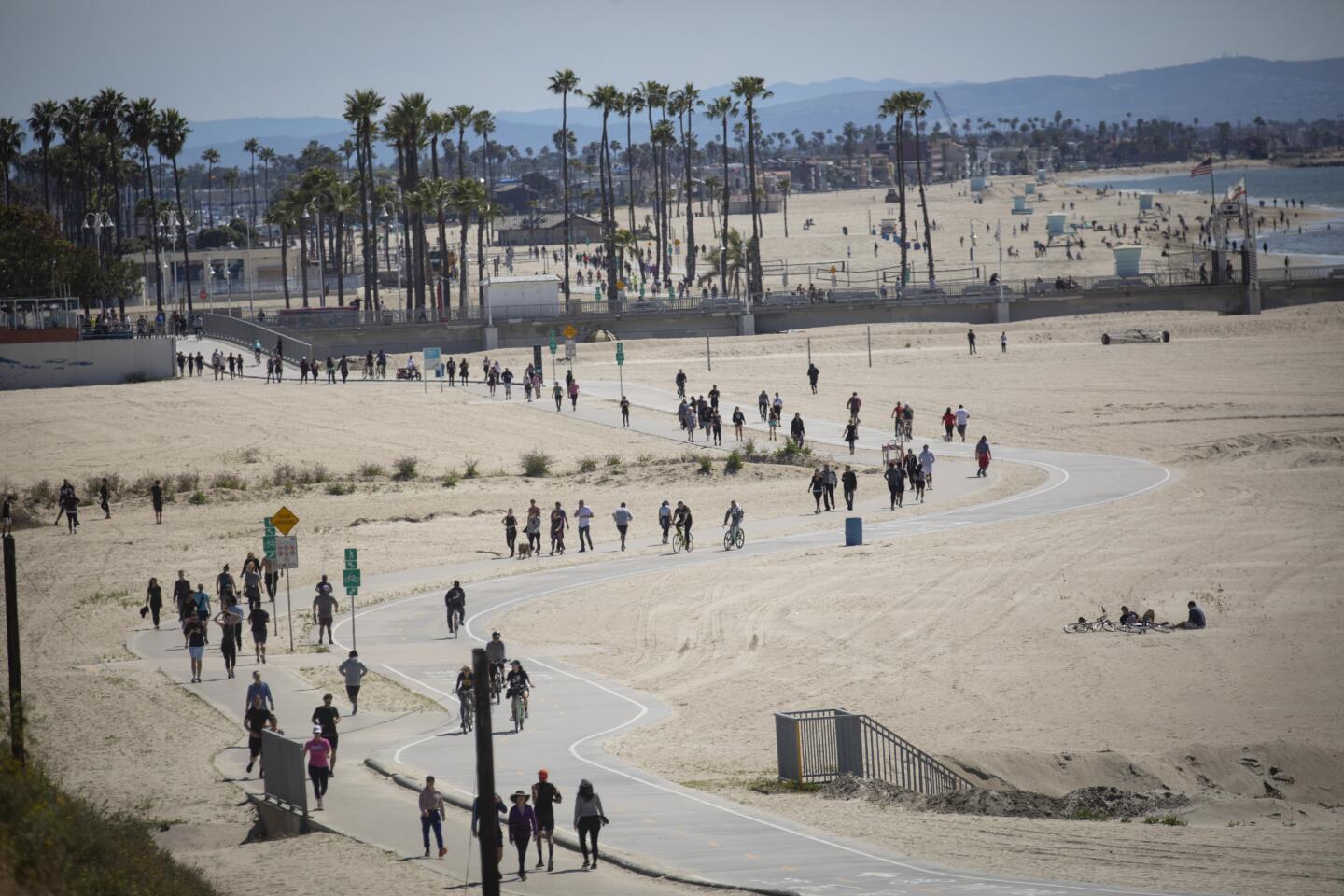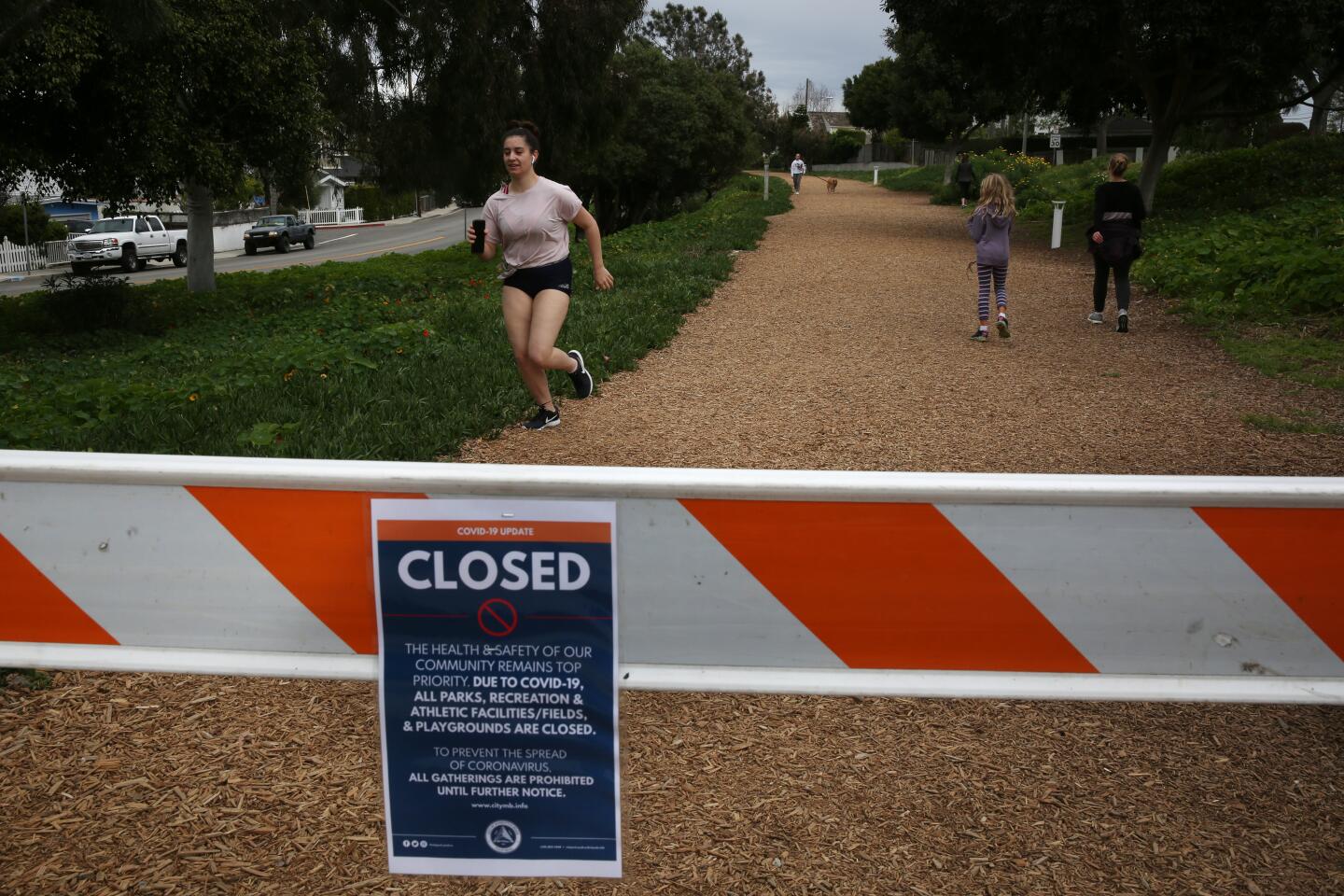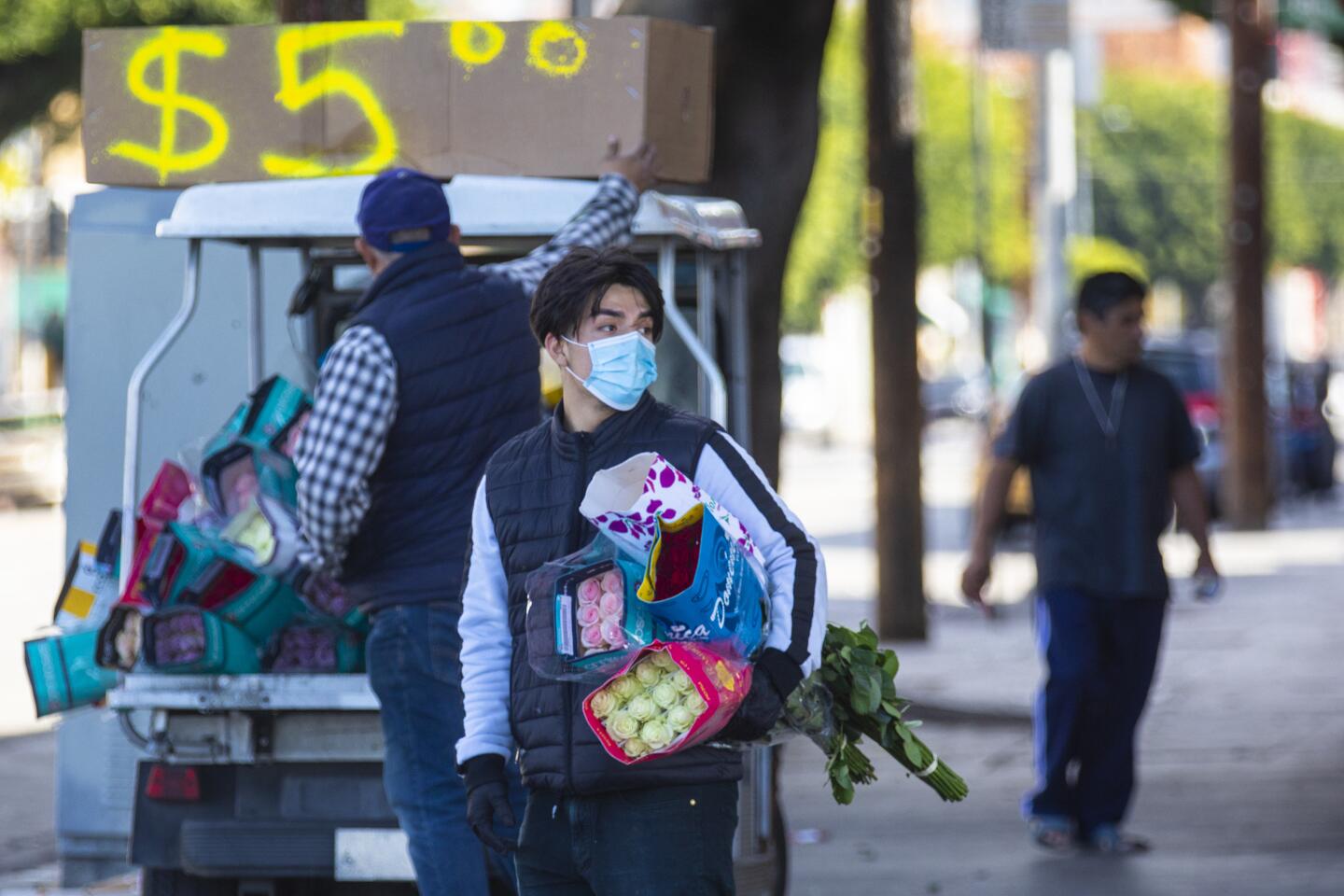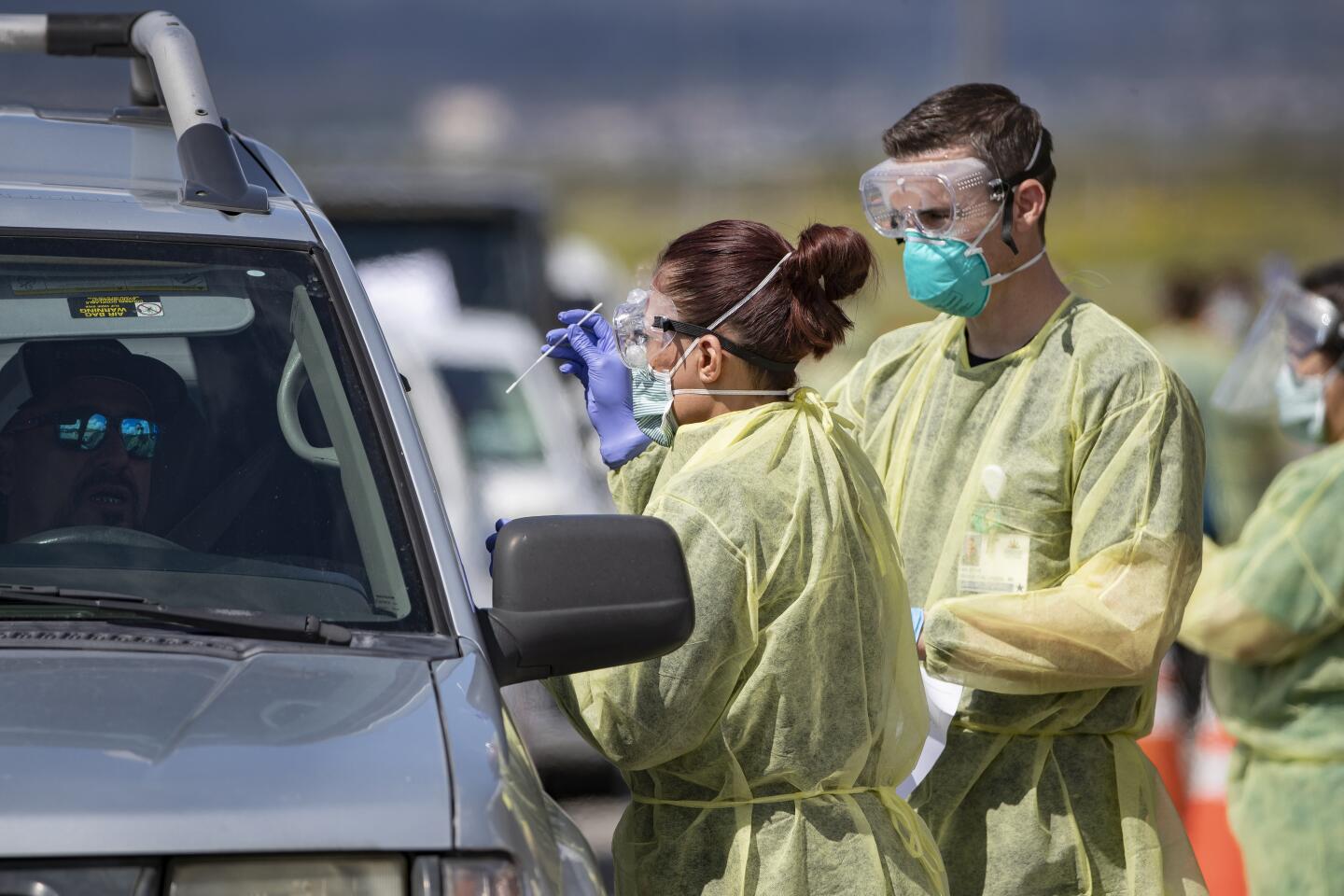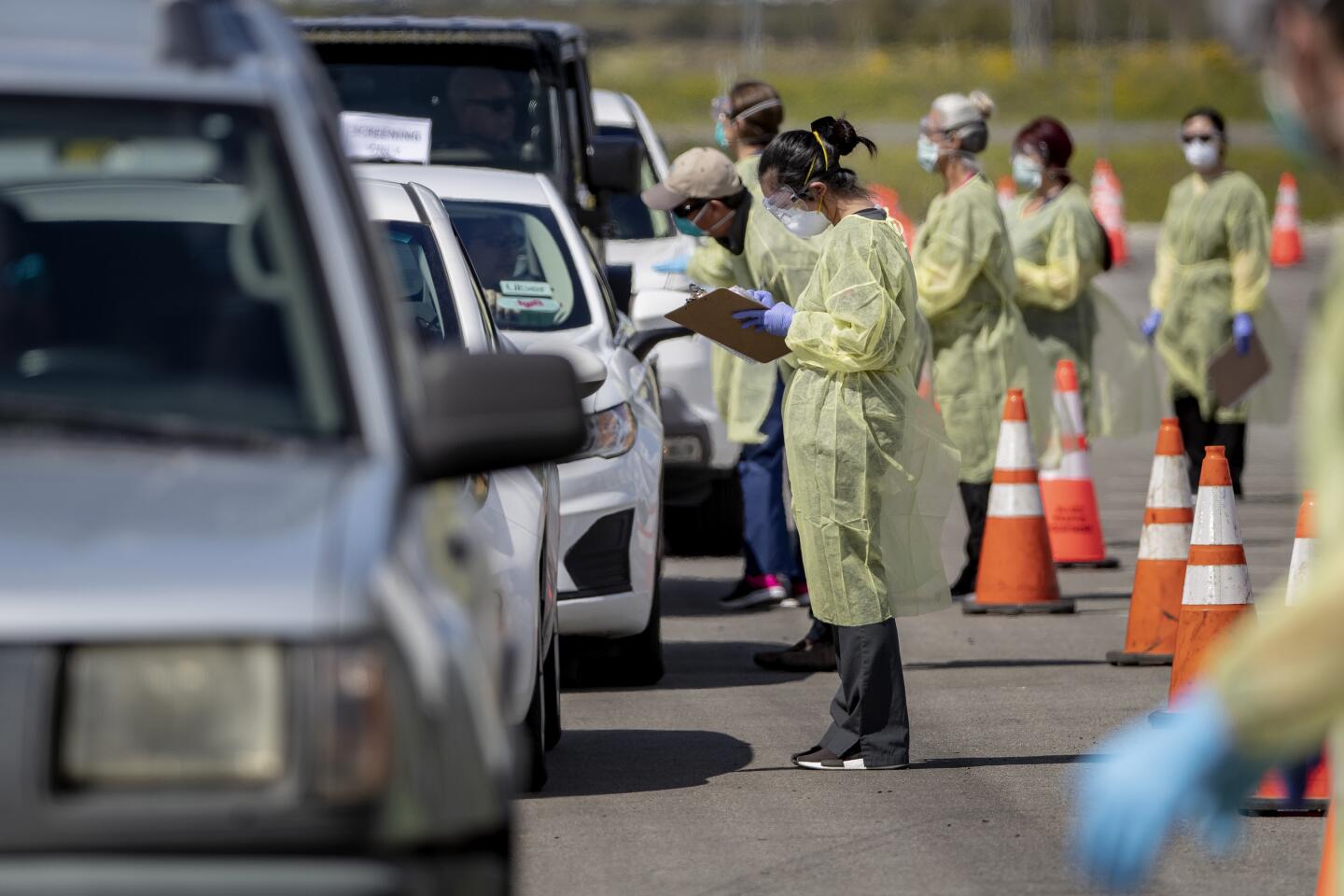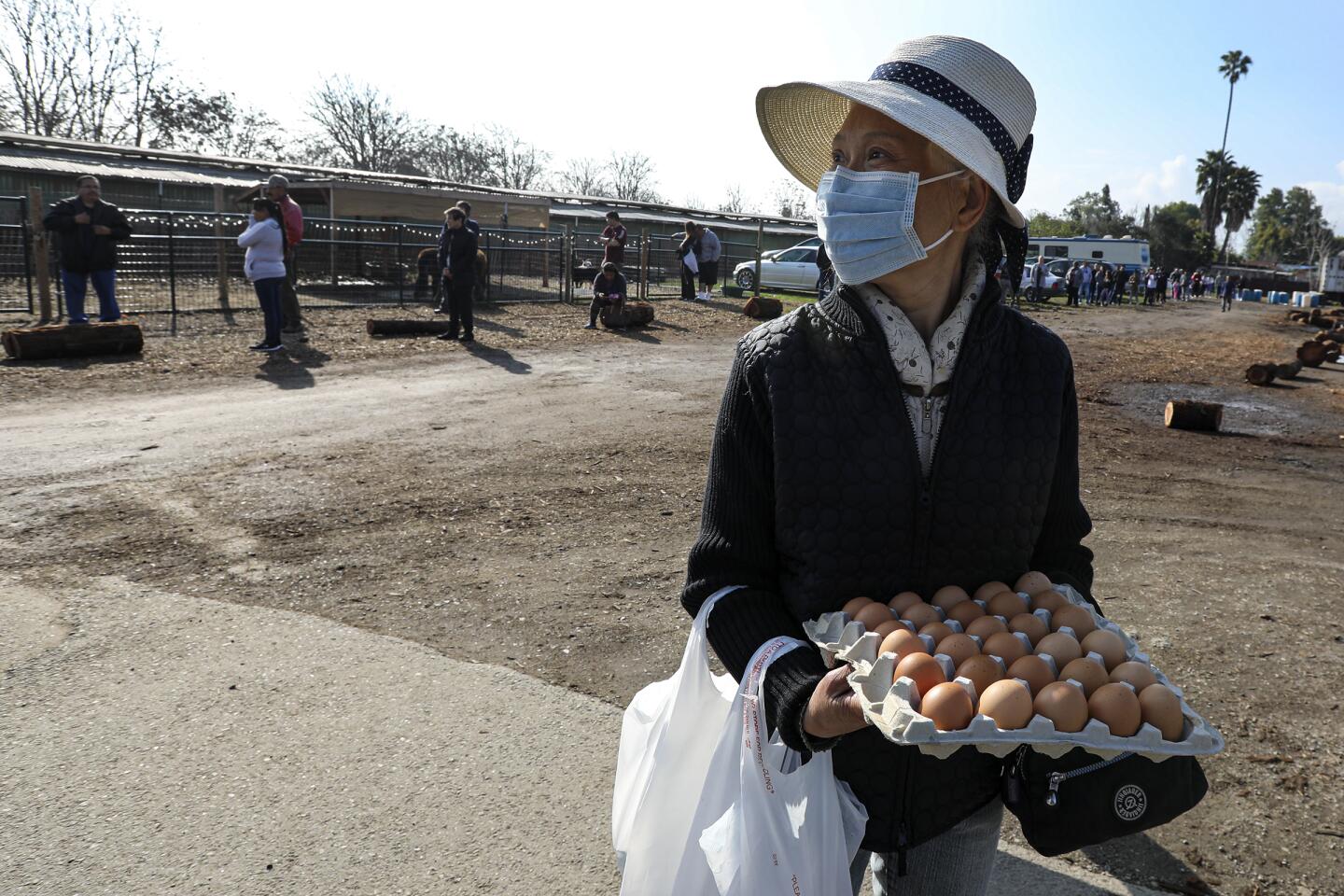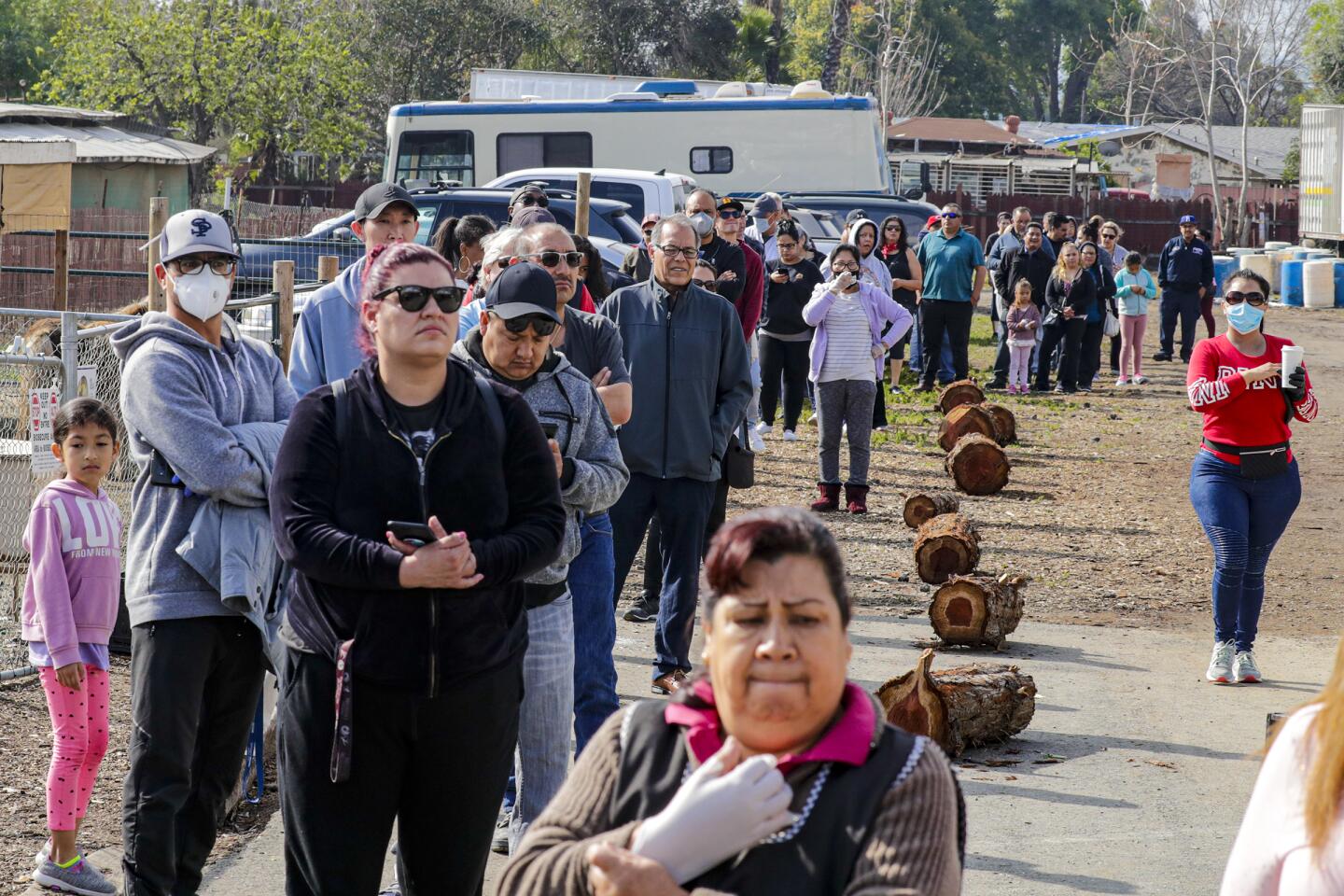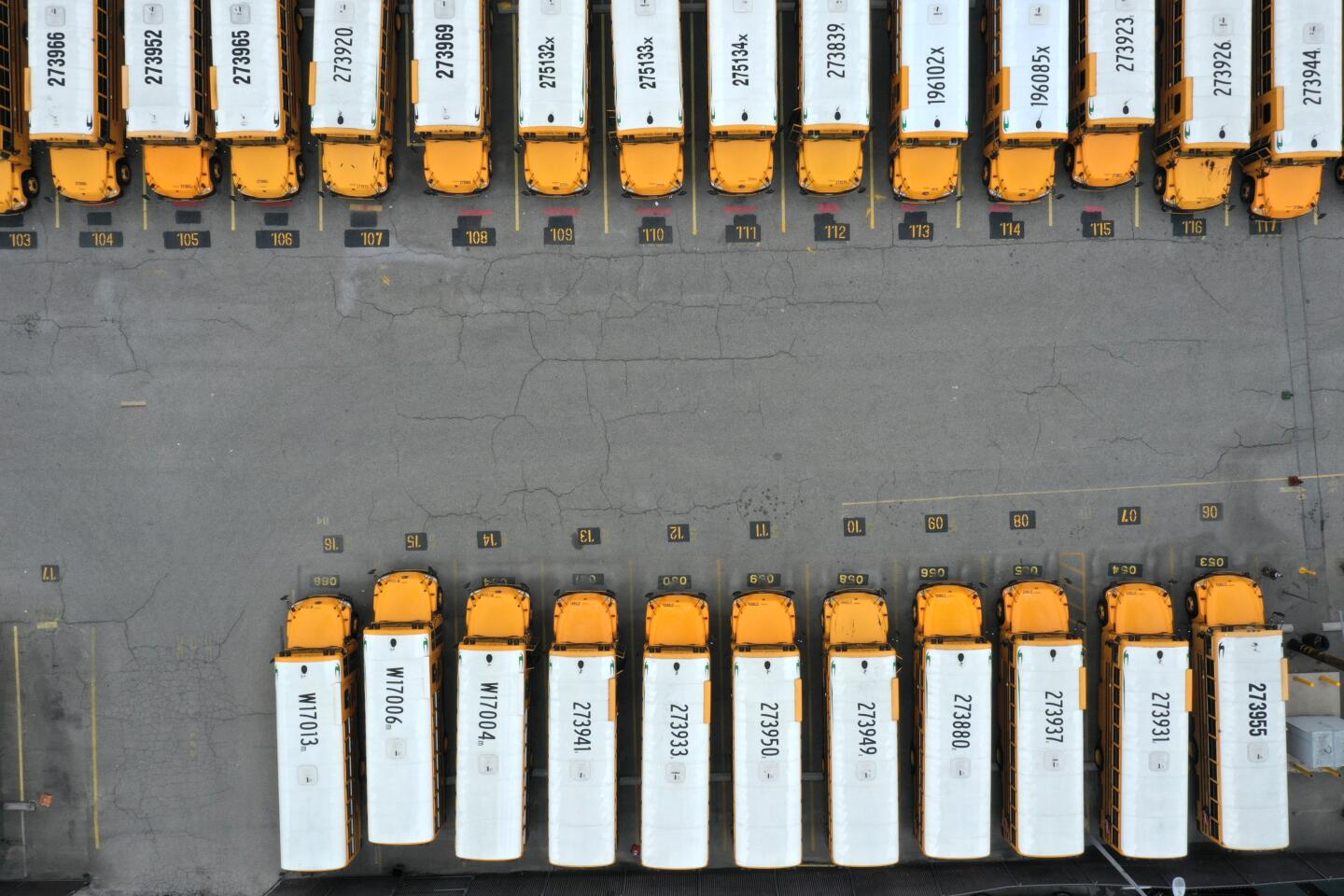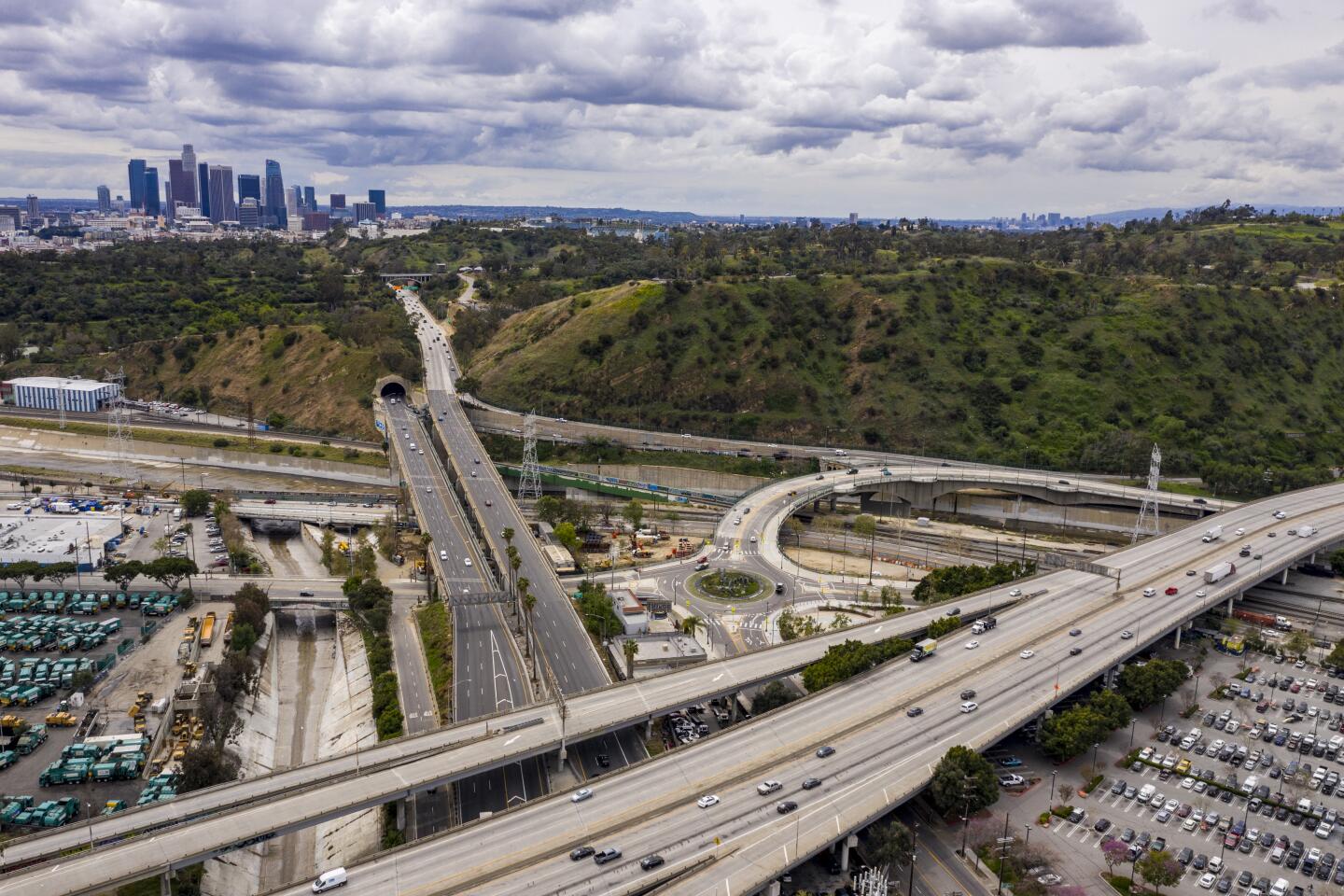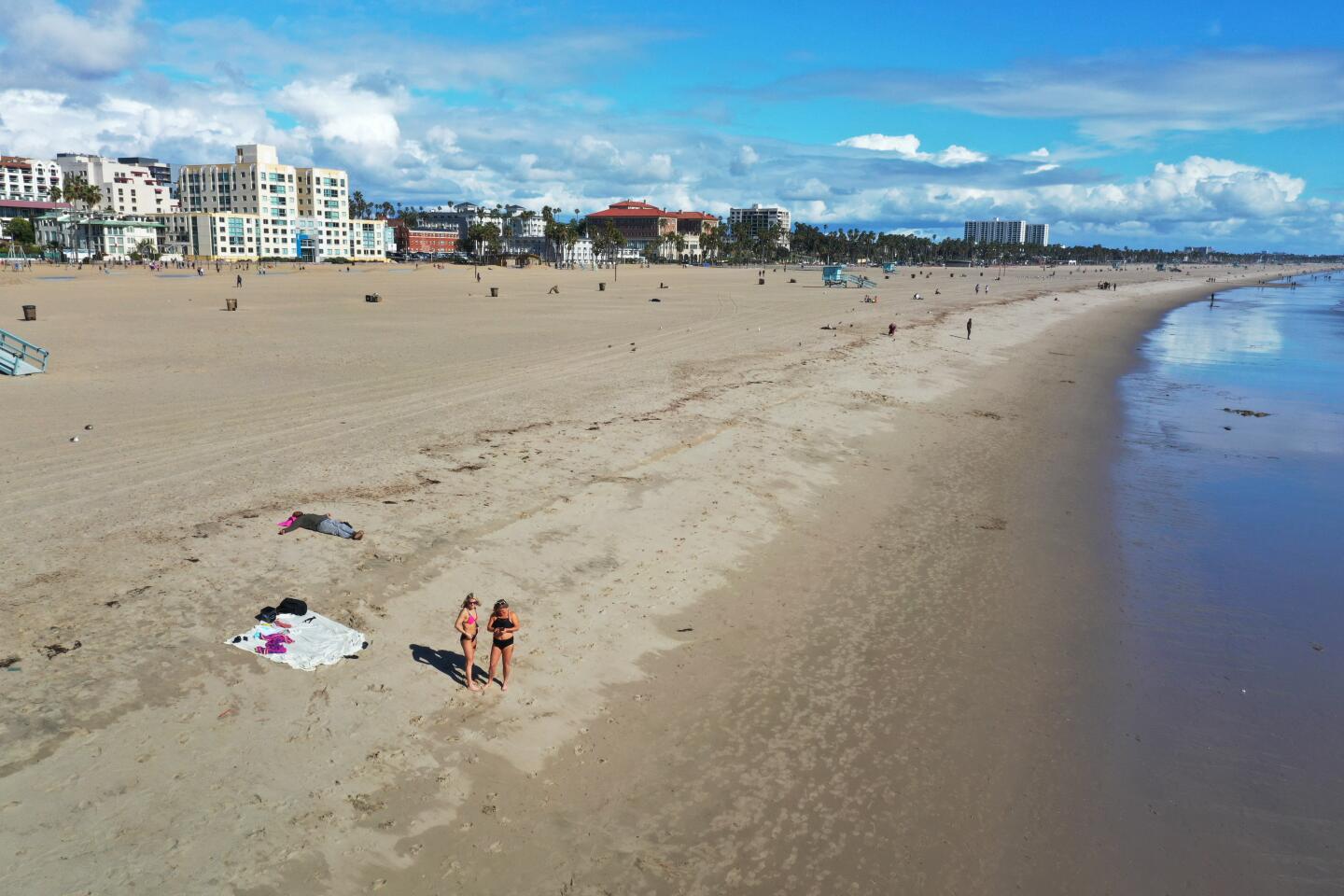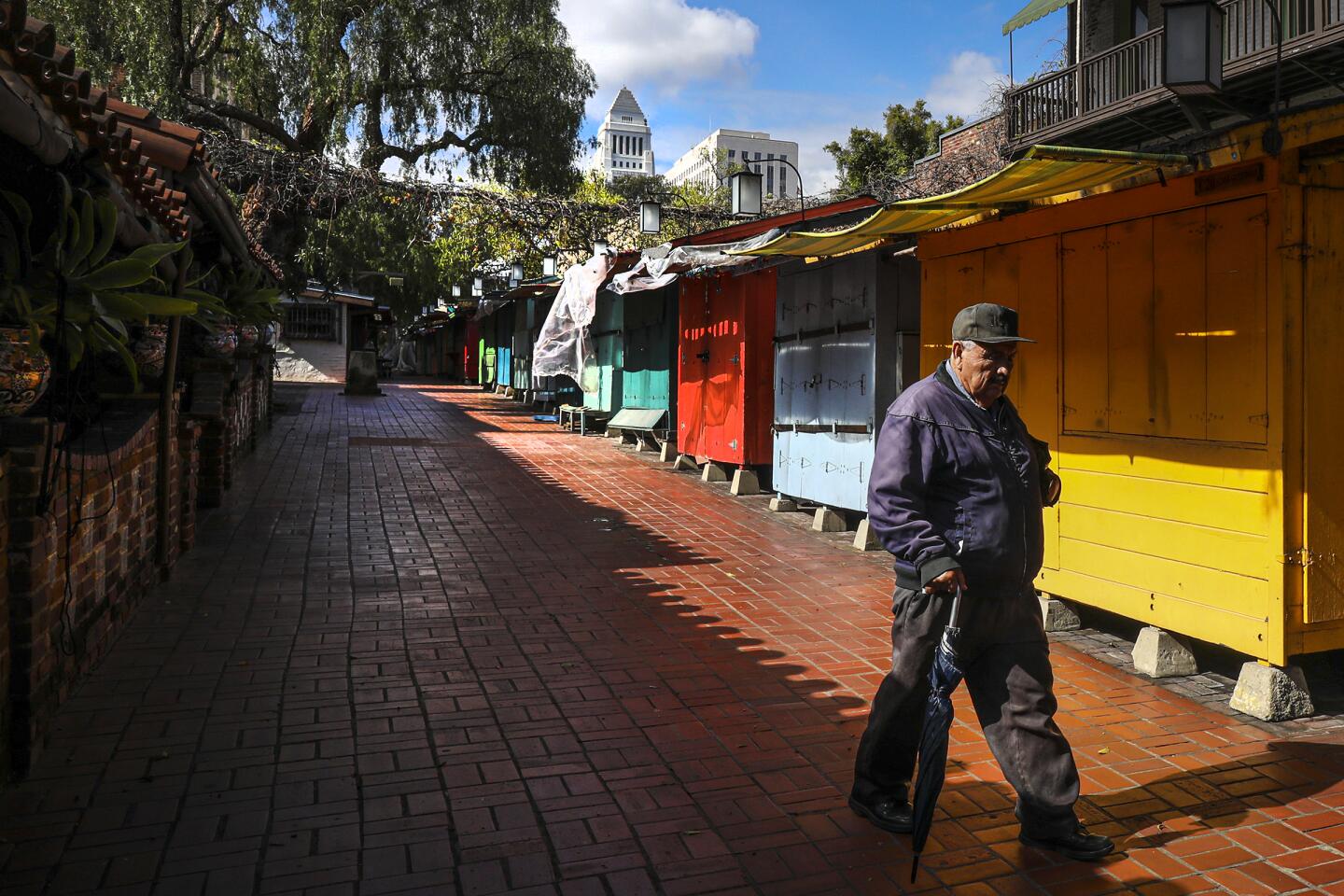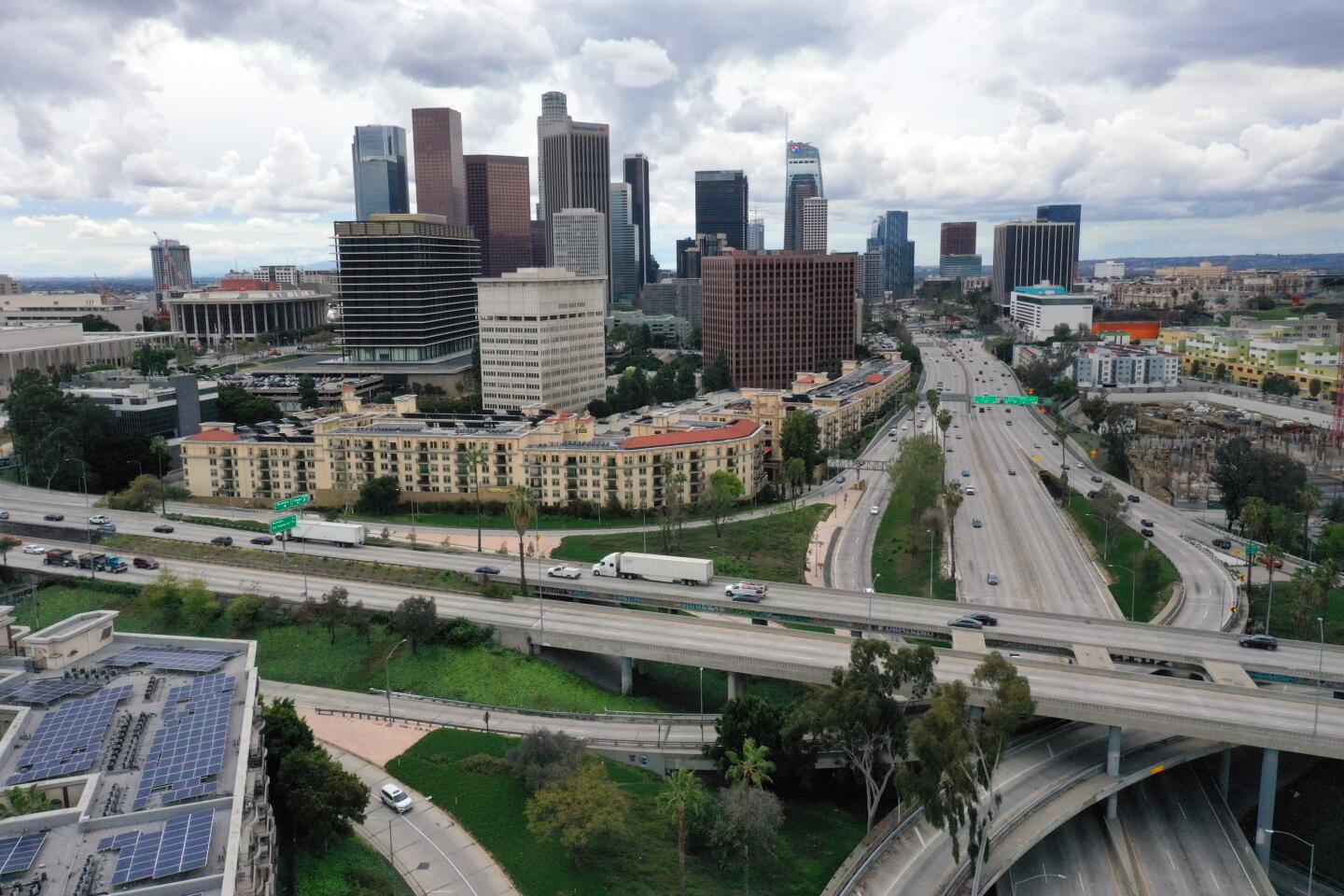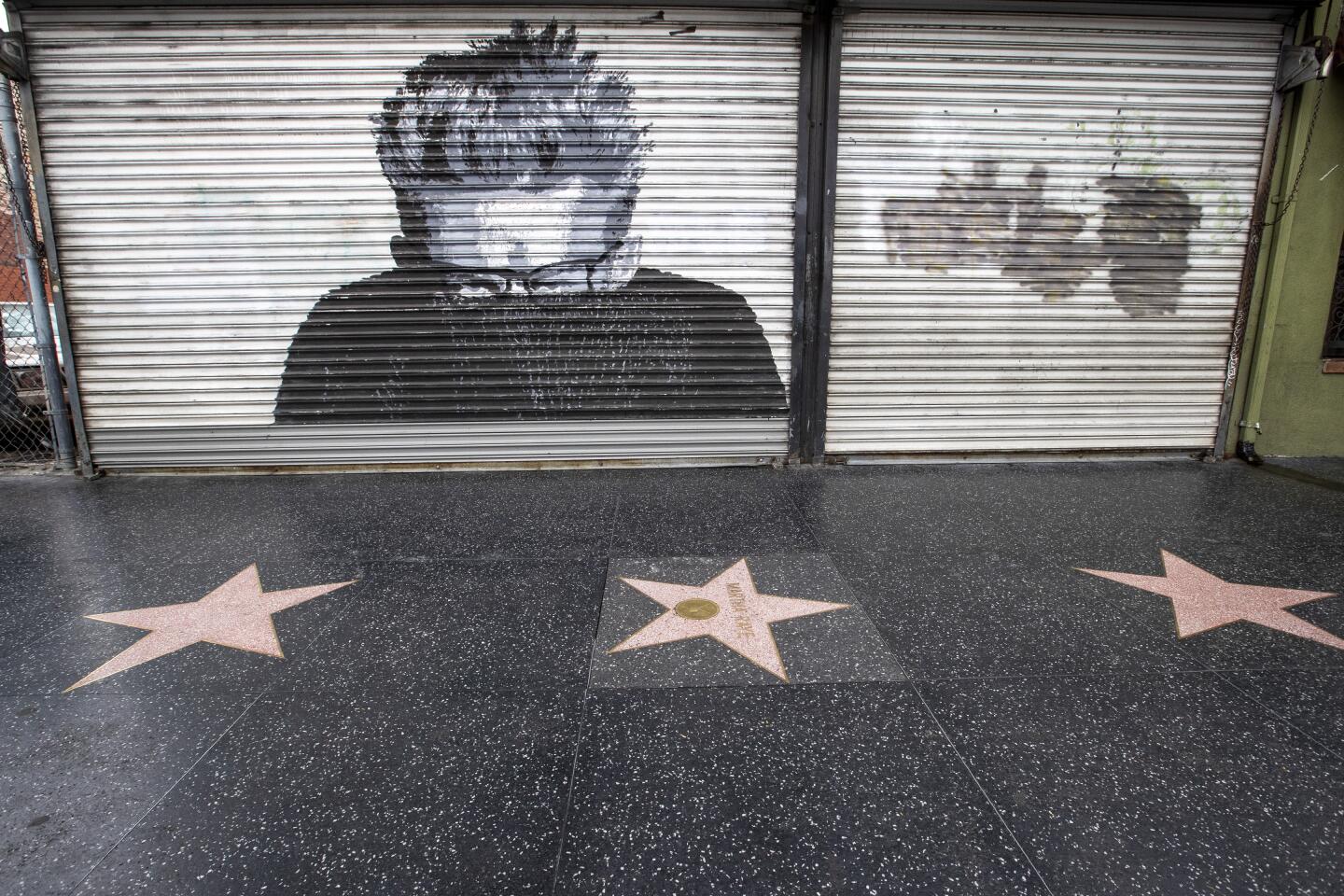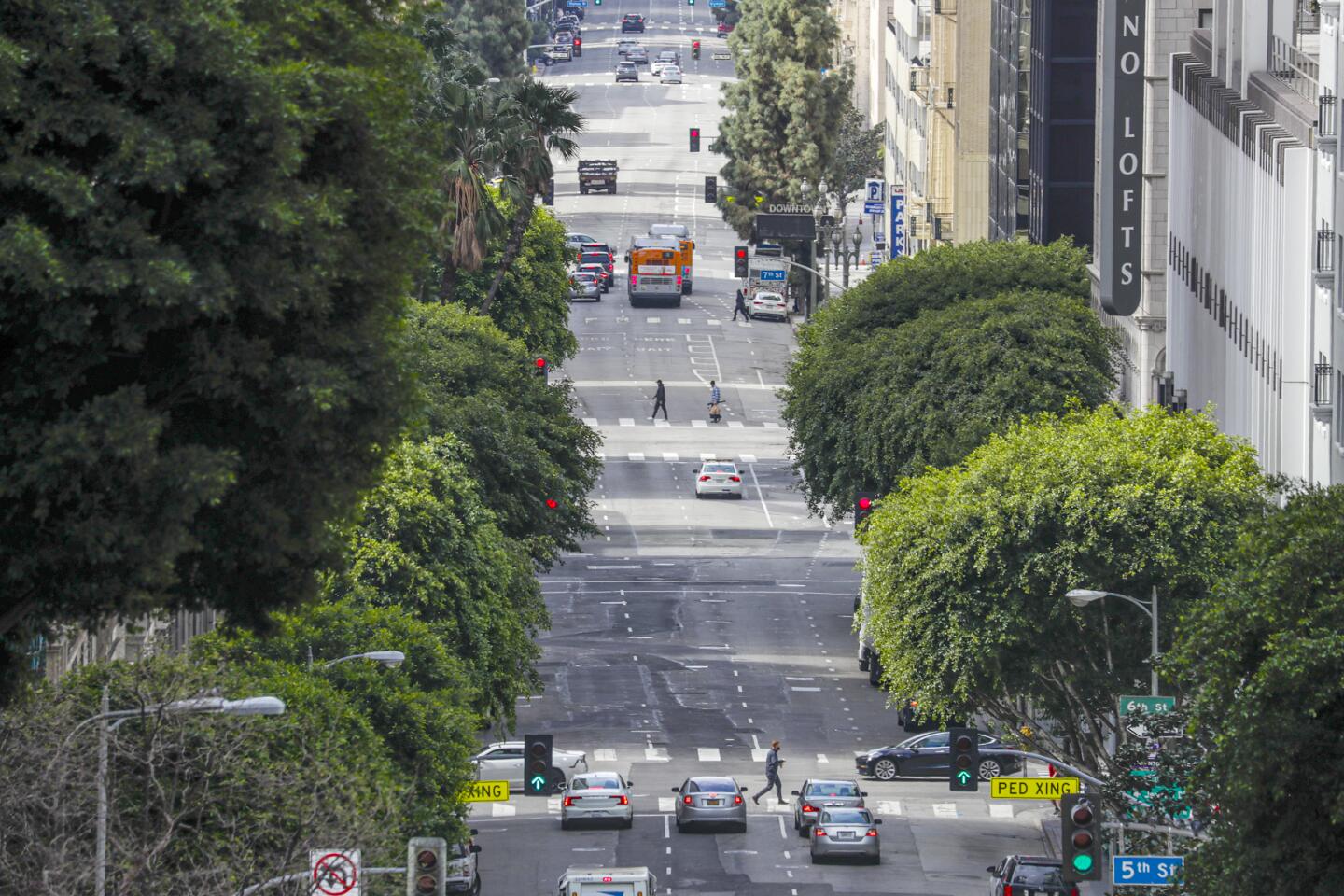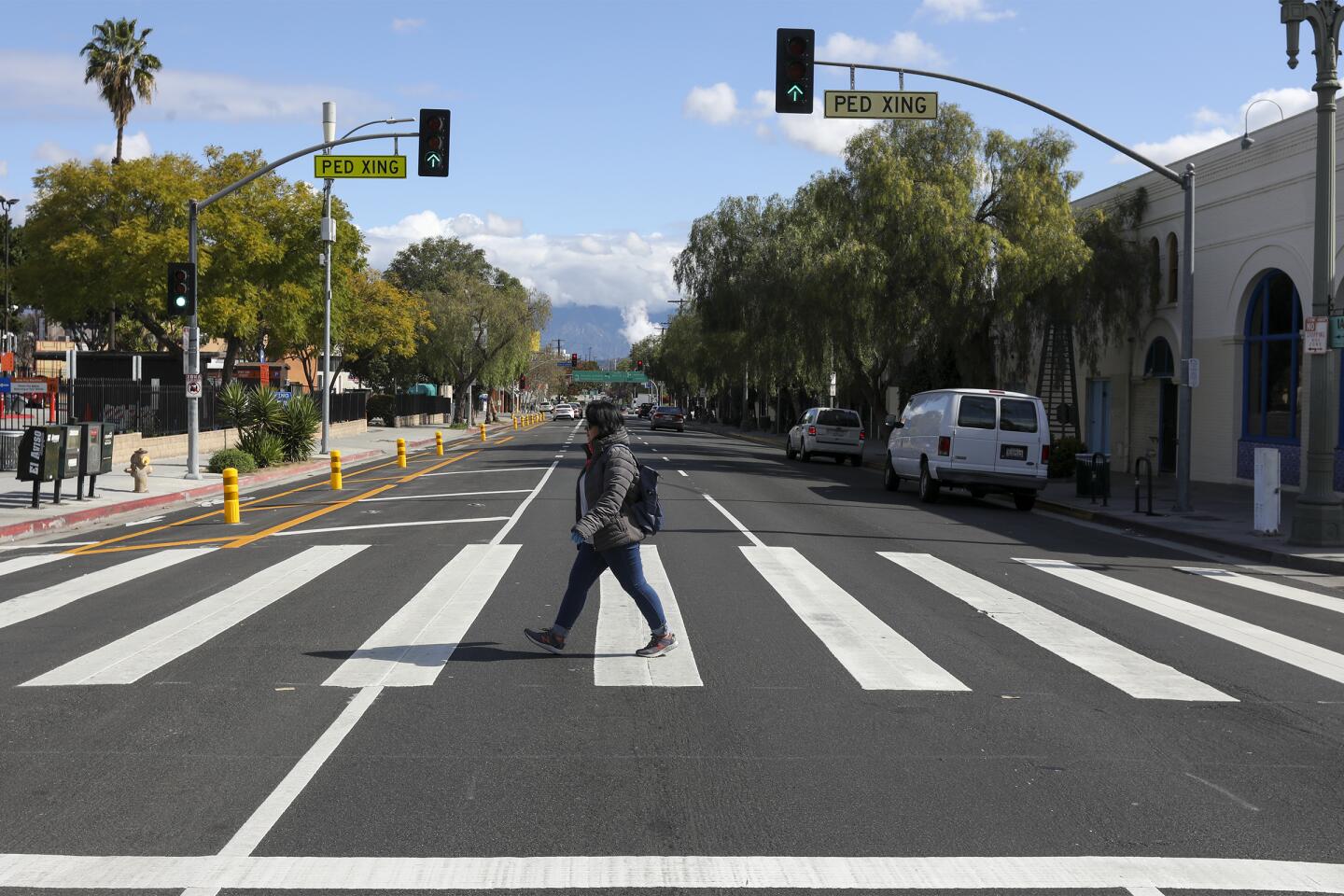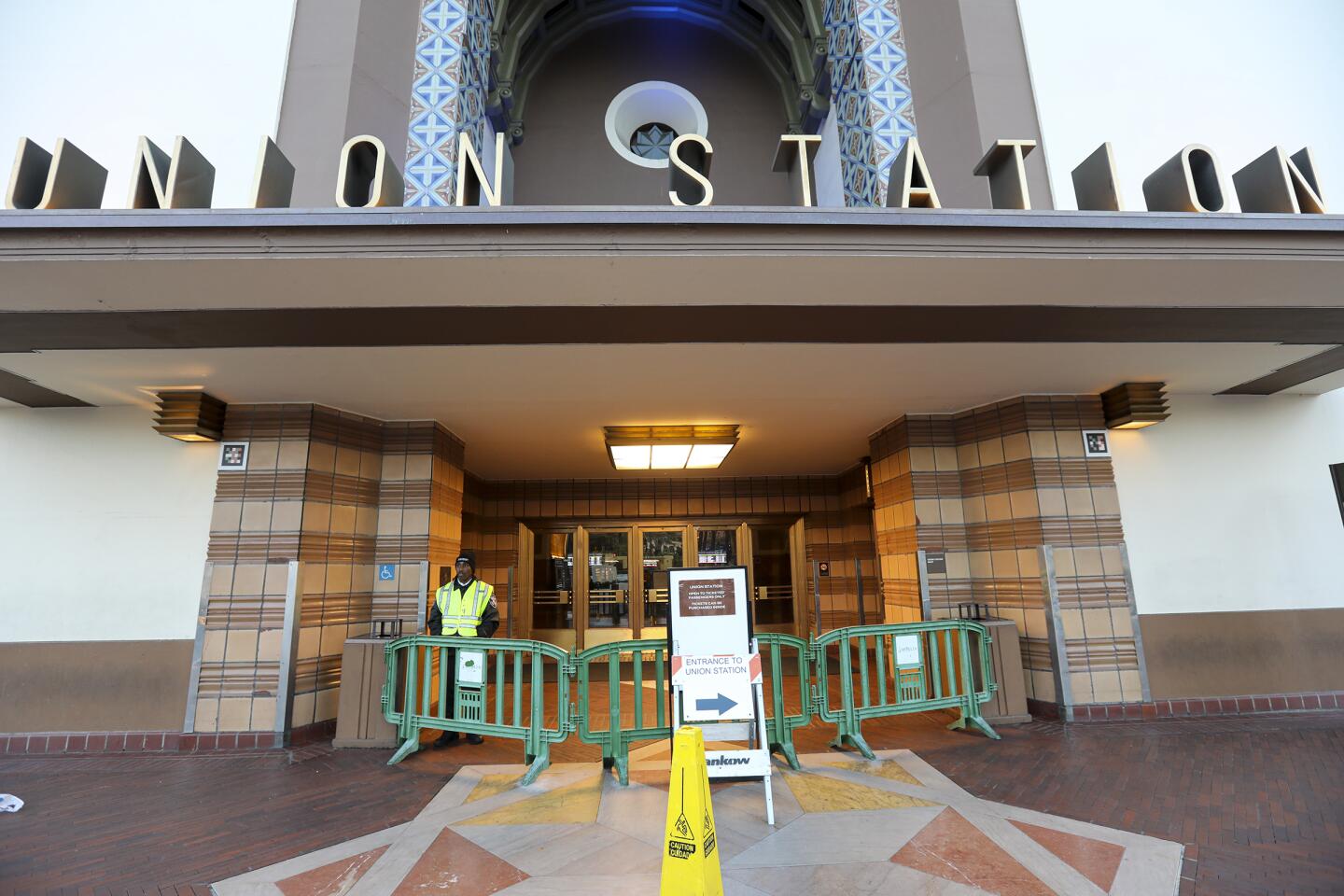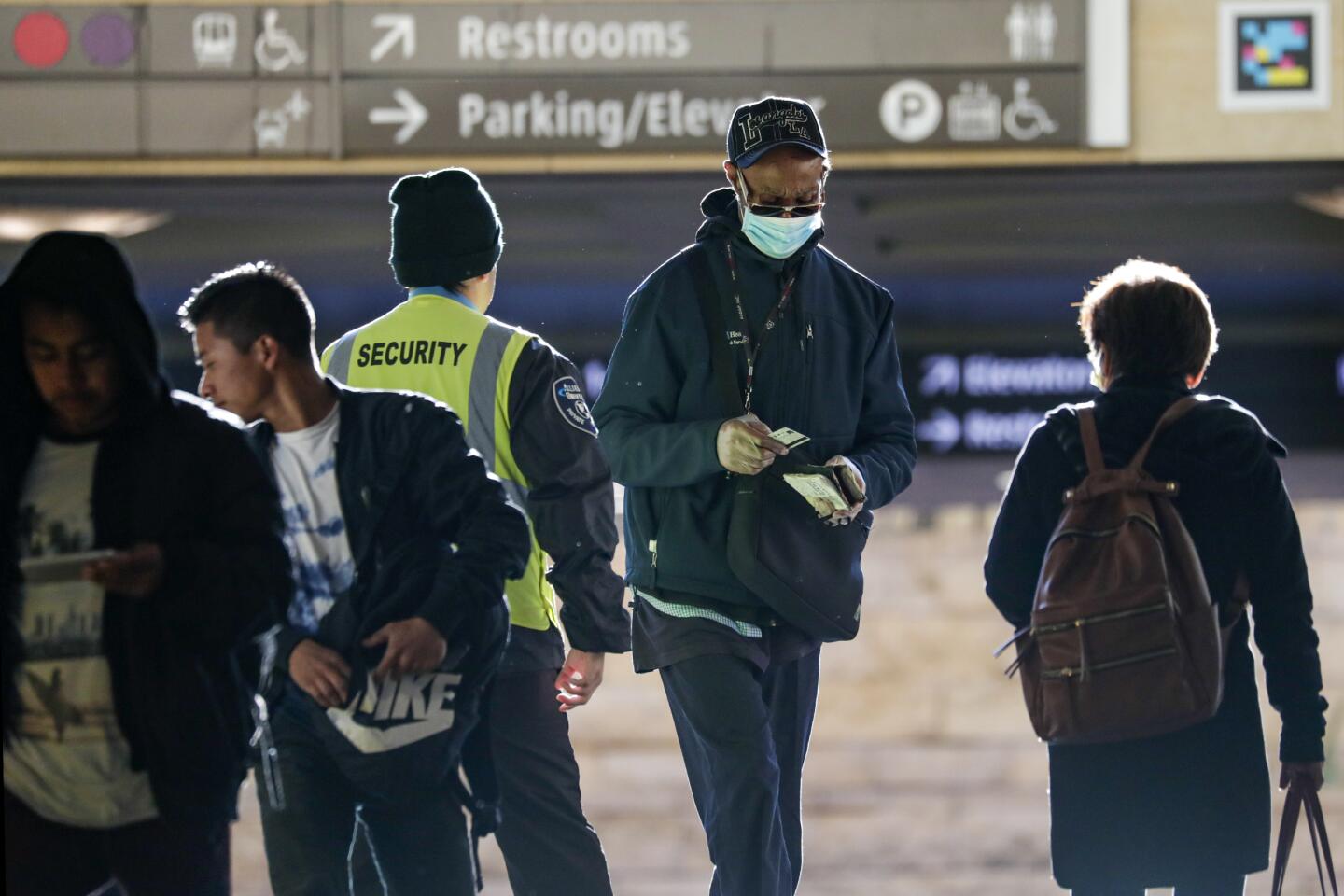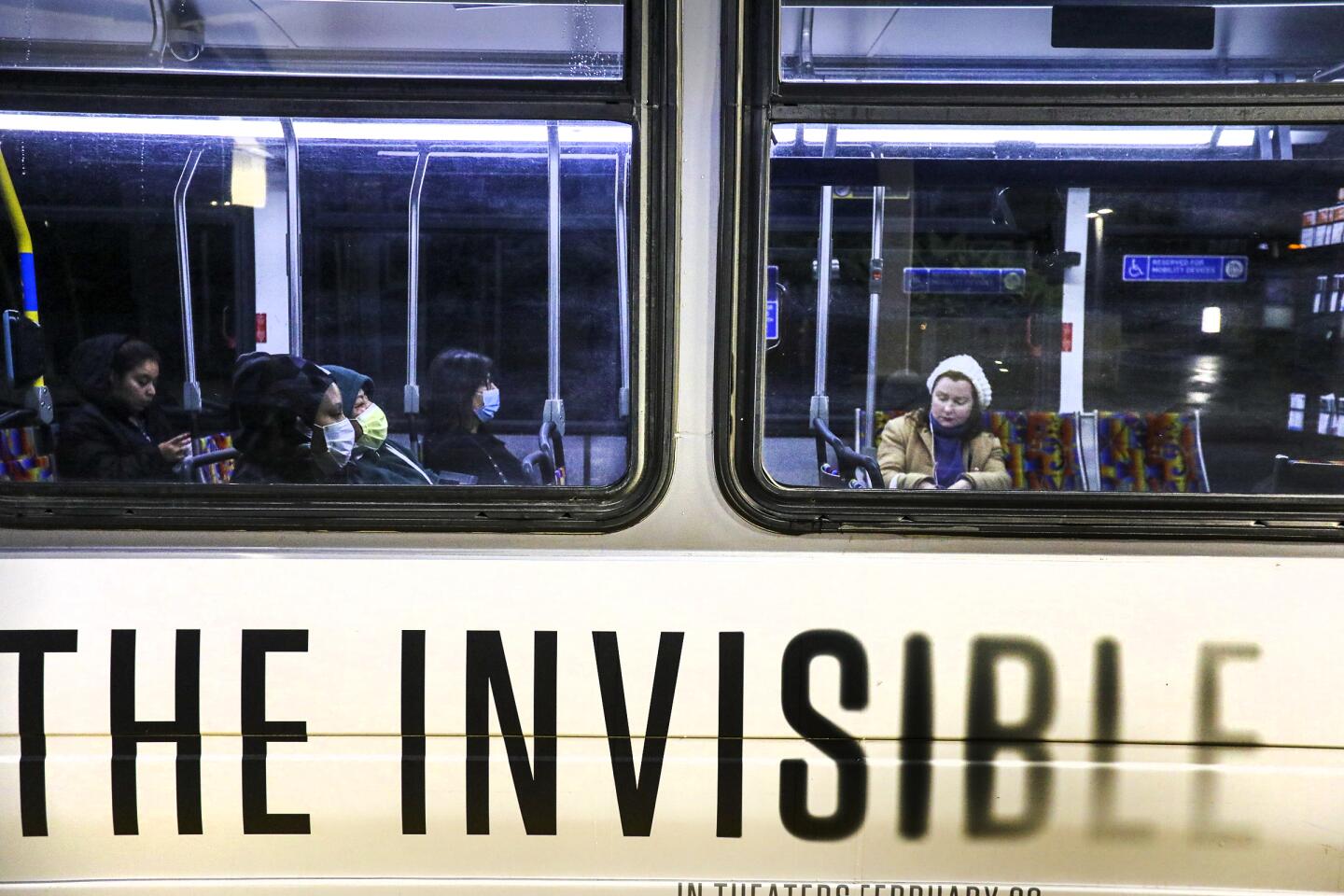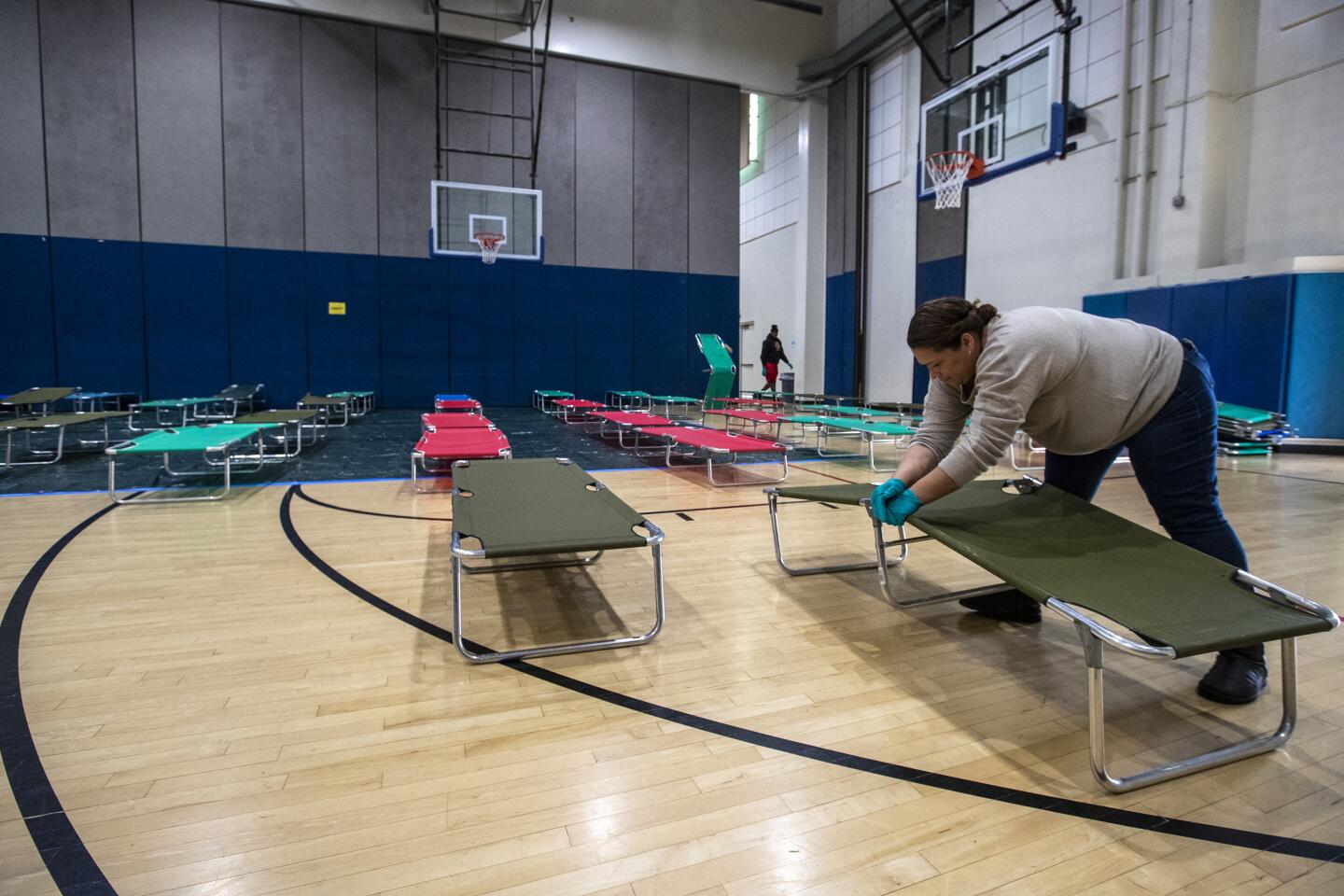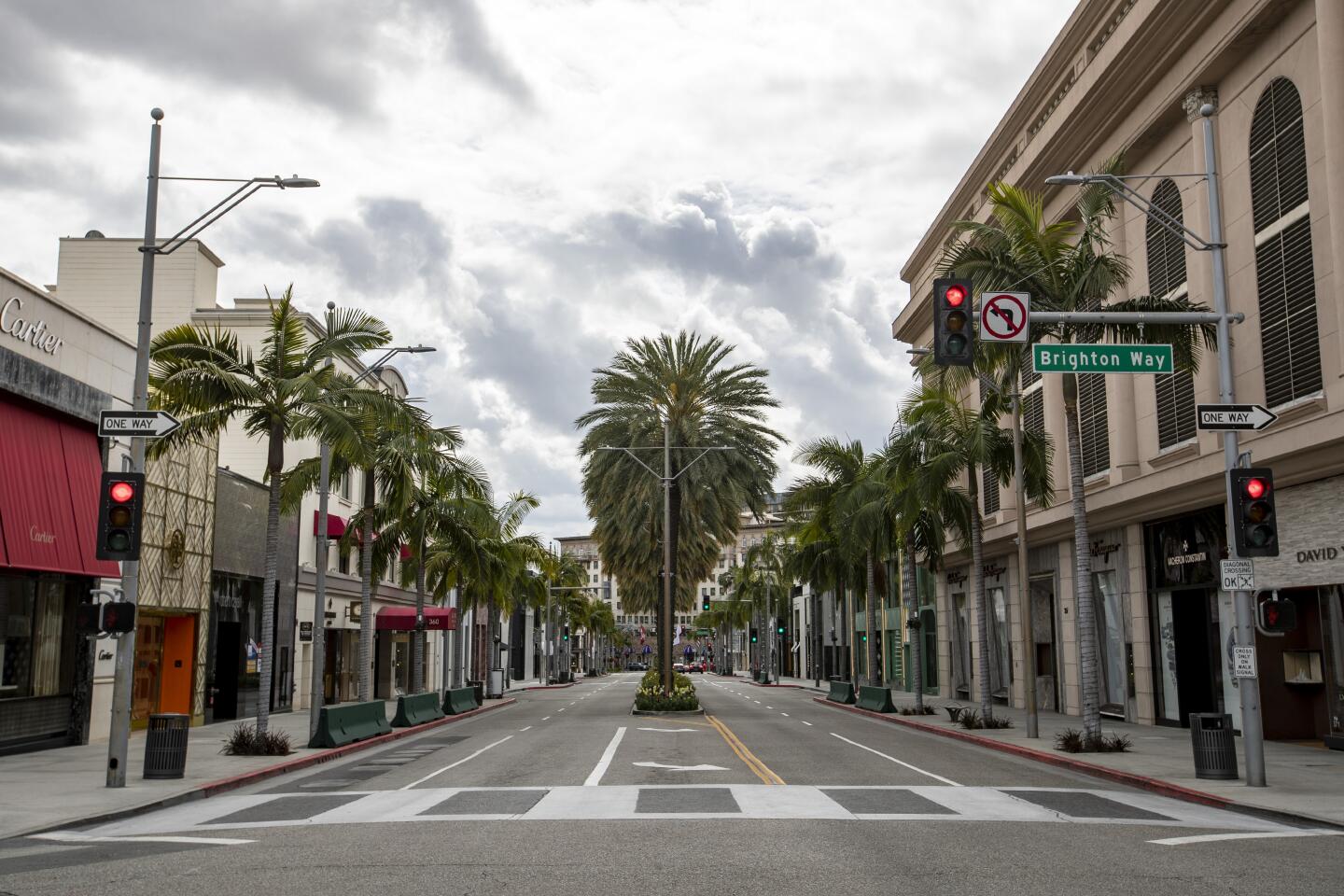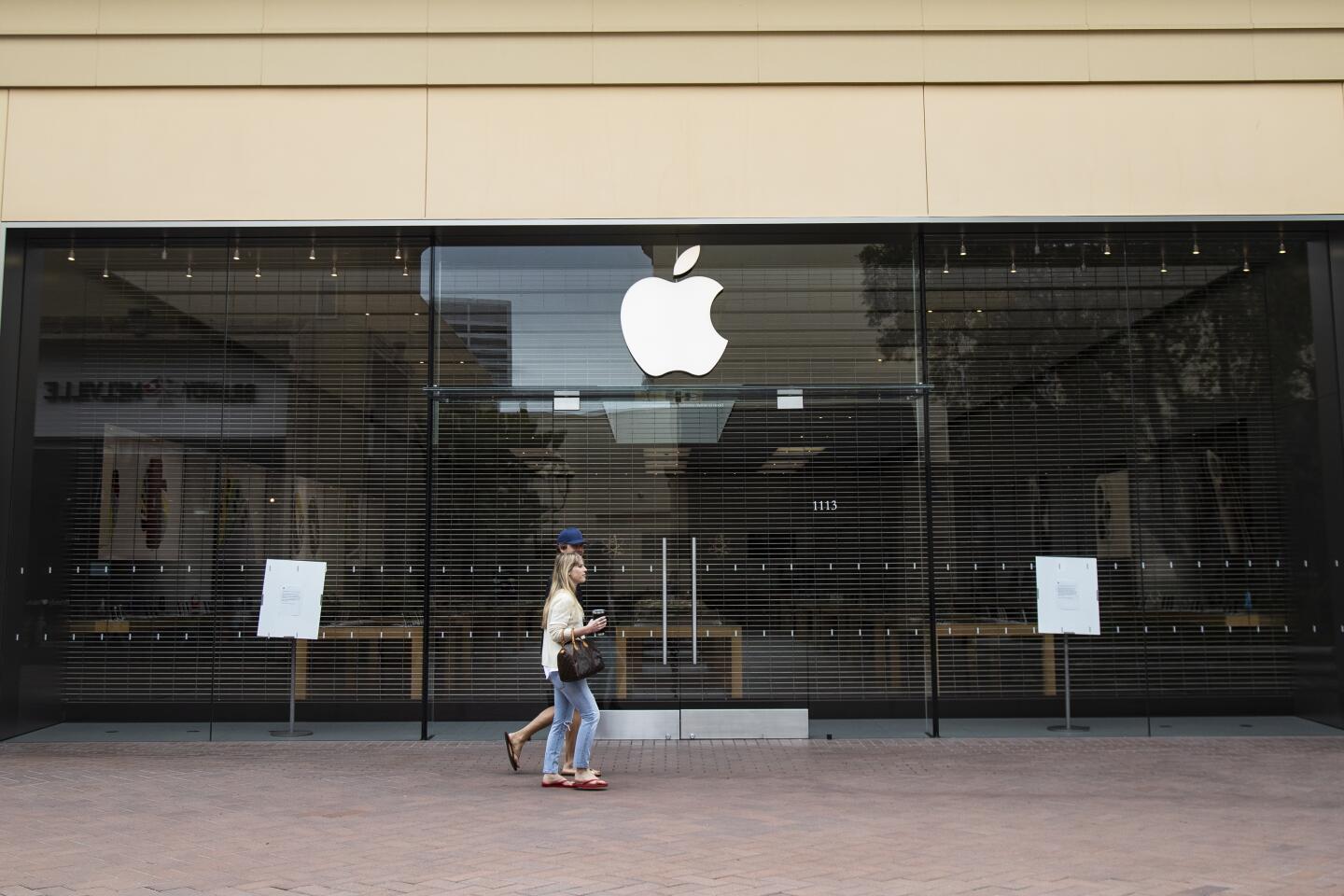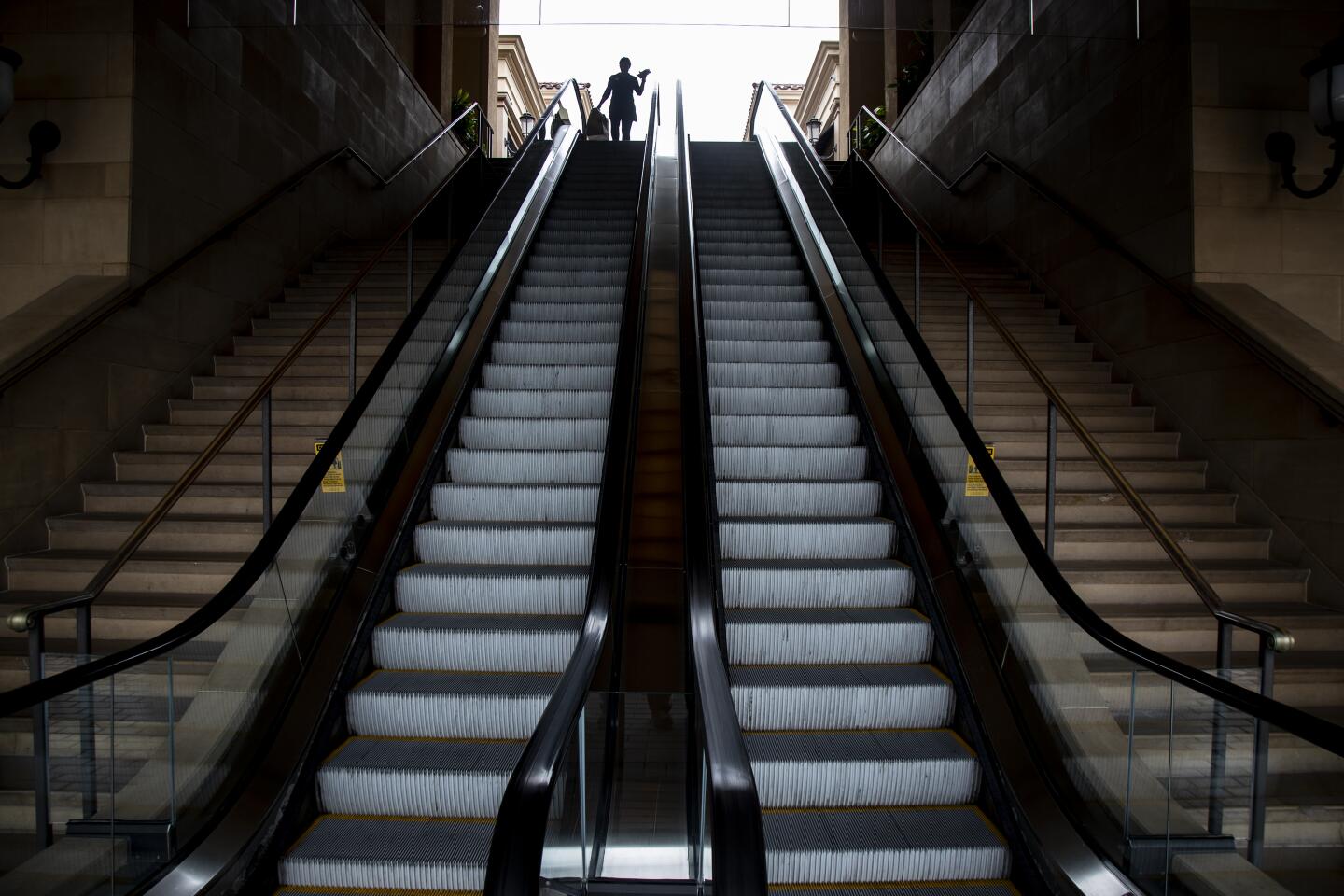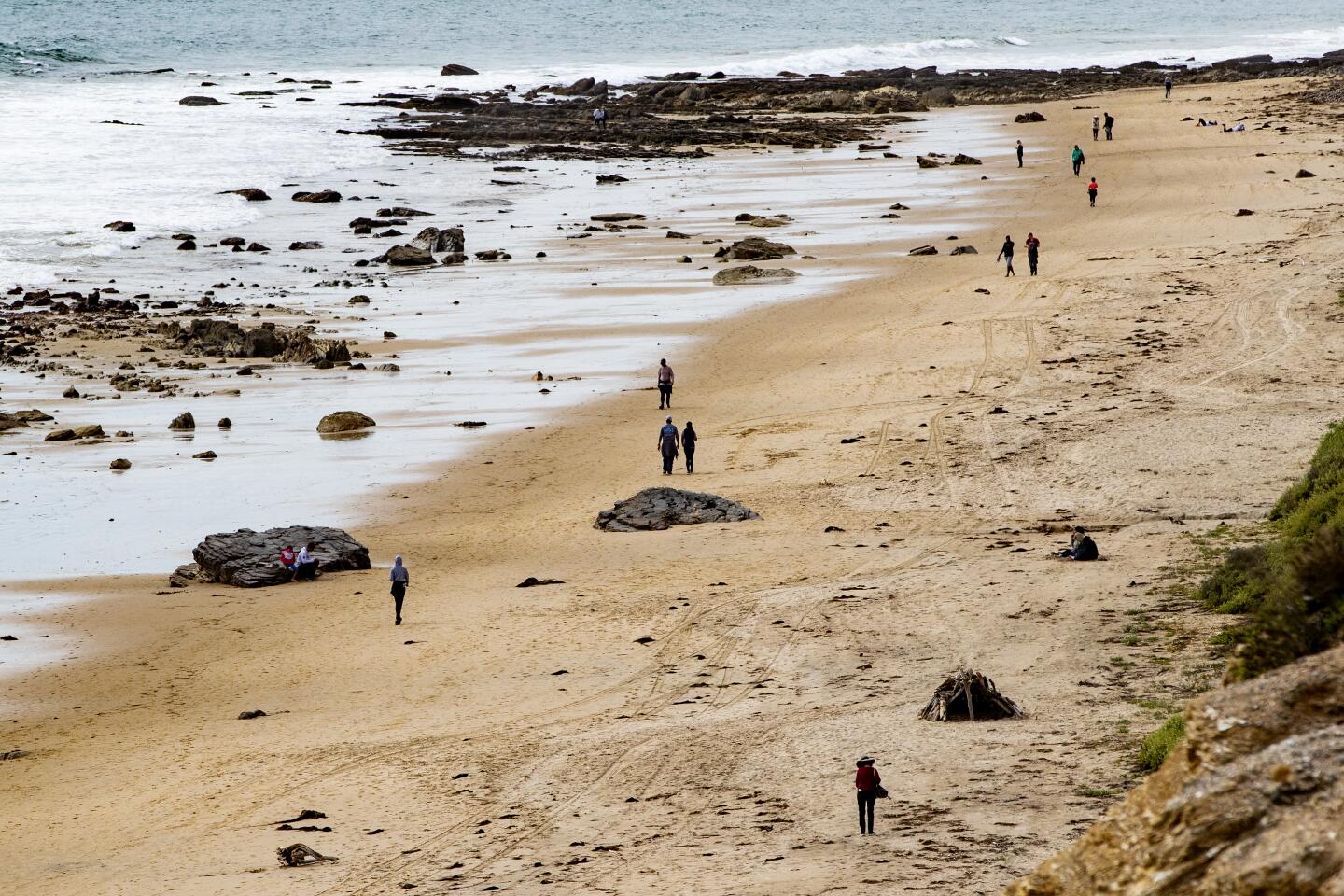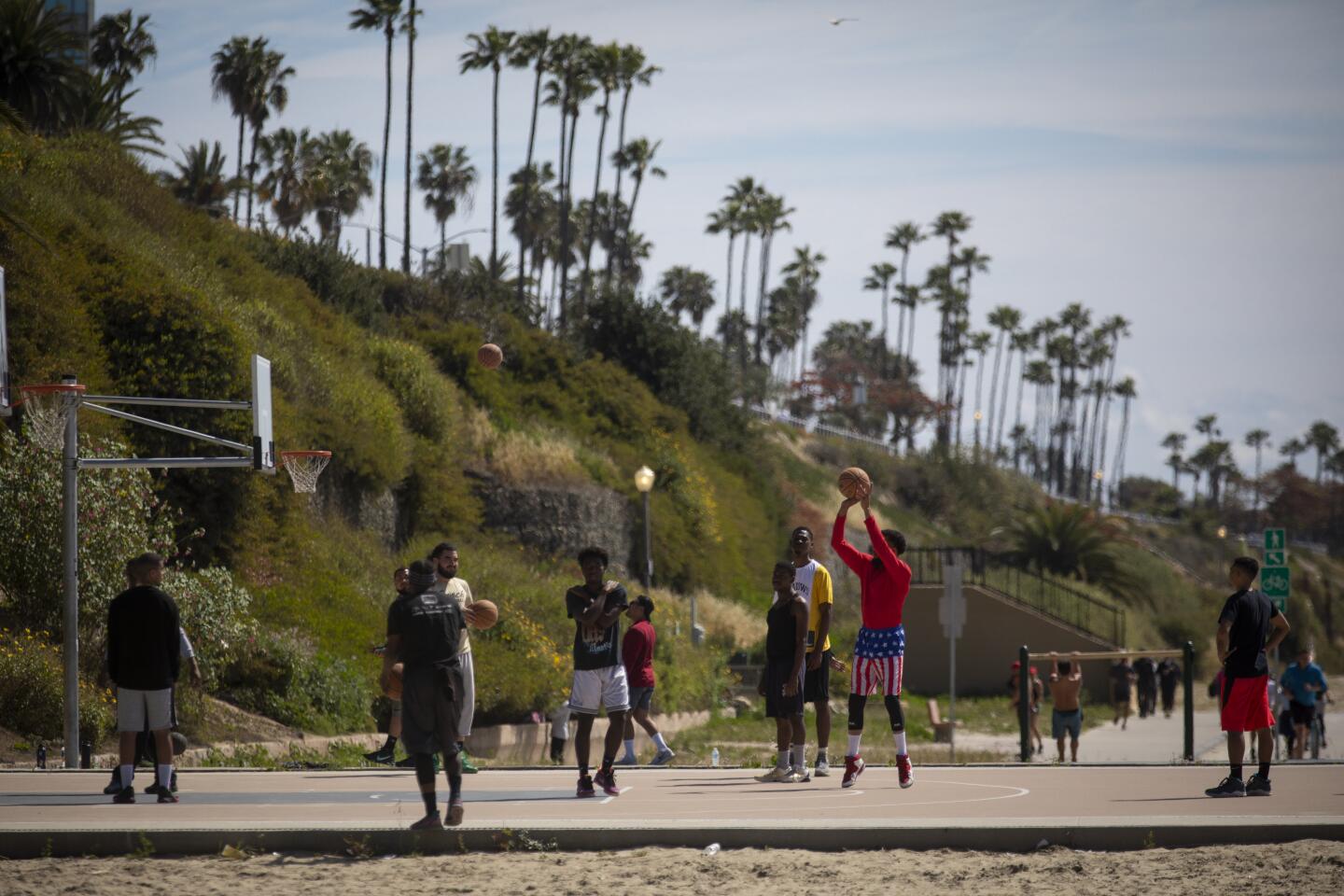Trump halts most traffic on U.S. border with Mexico

- Share via
WASHINGTON — The U.S. and Mexico have agreed to restrict all nonessential travel across their shared border in an effort to slow the spread of the coronavirus, President Trump said Friday, adding that he was invoking the Defense Production Act to increase output of badly needed medical supplies.
Trump also said at a White House news conference that the tax filing deadline has been extended from April 15 to July 15, noting that people who have refunds due can still file early.
The announcements at the daily White House news briefing came as negotiations continued in the Senate on efforts to pass a massive economic stimulus bill to counter the impact that stay-at-home orders and closures of many businesses have had.
The briefing again featured a host of officials, most seeking to calm and inform a nervous public. Trump himself, however, veered repeatedly into a thicket of partisan nettles, taking umbrage at questions about his own performance while casting blame for any broad failures on past administrations.
“We inherited a broken, old — frankly a terrible system,” Trump said. “We fixed it, and we’ve done a great job; and we haven’t been given the credit we deserve.”
The president’s characteristic triumphalism and peevishness, including a harsh verbal assault on a reporter, drew attention away from the more calibrated comments by health officials, who warned again that the crisis will worsen before it gets better, as well as from the news related to the closing of the southern border, which Secretary of State Michael R. Pompeo announced.
“Both our countries know the importance of working together to limit the spread of the virus and to ensure the commerce that supports both our economies keeps flowing,” Pompeo said, adding that the new restrictions will take effect on Saturday.
The U.S. and Mexico were in discussions to ensure that workers, including legal agricultural workers, could continue to cross the border for their jobs, Pompeo said, adding that the aim was not to interfere with commerce.
Every day, more than $1.6 billion in goods and services flow across the border, according to the U.S. Chamber of Commerce. So, too, do roughly half a million legal workers, students, shoppers and tourists, who cross with visas.
Even a partial closure of the border is likely to affect Mexico’s struggling economy. Mexico posted near-flat growth last year and now appears headed for recession, analysts say. This week, the peso tumbled to a historical low amid growing concerns about the impact of the virus and a related dip in oil prices.
Under the new rules, the Border Patrol will begin returning all undocumented immigrants directly to Mexico or Canada when they are caught at the border, rather than detaining them in the U.S., said Chad Wolf, acting secretary of Homeland Security.
Advocates for migrants said the closure would simply worsen the plight of thousands of asylum applicants and others living in makeshift camps on the Mexican side of the border waiting for their cases to be heard. They accused the administration of using the health crisis as cover for further restricting migrants’ rights.
Trump denied that, saying the new border restrictions, along with those with Canada that were announced Wednesday, “will protect the health of all three nations and reduce the incentive for a mass global migration that would vastly deplete the resources that are all needed.”
Noncitizens seeking to enter the country amid the global pandemic “threaten to create a public storm that would spread the infection to our border agents, migrants and the public at large,” he said.
The restrictions on both the northern and southern land borders are needed because “we cannot be preventing people from coming in from one area when they can come in from another,” said Dr. Anthony Fauci, director of the National Institute of Allergy and Infectious Diseases, in explaining the need to close both major borders, not just one.
“There’s a public health reason for doing that.”
The new restrictions came as officials tried to prepare the country for a surge in the numbers of people whose infections have been confirmed. As testing expands, it is expected to offer a fuller picture of the scope of the outbreak, which has now spread to all 50 states and infected more than 14,000 people.
Regardless of the numbers, Trump said he did not think there was a need for a national lockdown.
“I don’t think we’ll ever find that necessary,” he said, noting that while some states have large numbers of cases, others are “watching it on television.”
But he praised two frequent Democratic adversaries of his, California Gov. Gavin Newsom and New York Gov. Andrew Cuomo, who have issued broad orders restricting activities in their states.
“I applaud them” for “taking very bold steps,” Trump said. Fauci also praised both governors, urging residents of the two hard-hit states to heed the new orders.
Newsom’s order that Californians remain at home, announced Thursday night, had drawn criticism from some Republicans, including House Republican leader Kevin McCarthy (R-Bakersfield), a Trump ally.
Trump has made a point of praising Democrats during his public appearances, trying to create an image of national unity. But he has had trouble maintaining that calm tone consistently.
The most acrimonious exchange during the briefing came after NBC News correspondent Peter Alexander pointed out an apparent contradiction between Trump’s optimism about the effectiveness and fast approval of existing antiviral drugs in coronavirus cases and the skepticism from Fauci.
When Alexander then asked what Trump would say to Americans who are scared about the virus, Trump snapped back: “I say that you’re a terrible reporter.”
“I think it’s a very nasty question, and I think it’s a very bad signal that you’re putting out to the American people. The American people are looking for answers, and they’re looking for hope. And you’re doing sensationalism,” he said.
Raising his voice as he continued to berate Alexander, Trump made it clear he was upset over Alexander’s initial question about whether the president was giving Americans false hope by hyping the drugs as a potential cure.
“Let’s see if it works,” Trump said, referring to an existing drug currently undergoing clinical trials for use in COVID-19 cases. “It might and it might not.”
Fauci later tried to play down any disagreement, saying that Trump was speaking out of optimism while, he, as a scientist, had to wait to see evidence.
Trump’s inconsistencies and repeated false statements have provided an opening for Democrats. Former Vice President Joe Biden on Friday called out the president’s policy shifts and deceptions and offered blunt advice:
“Stop swerving between over-promising and buck-passing and start delivering to the people,” he said.
One way Trump has sought to convey a sense of progress is by invoking the Defense Production Act, which allows the government to order factories to produce goods needed for national defense. He said he had ordered the law into use Thursday night, contradicting an account offered by Sen. Charles Schumer of New York, the Democratic leader, who said Trump had made the order while the two were on the telephone Friday morning.
Regardless of the timing, Trump offered little detail of what, specifically had been ordered, saying that the government was hoping to step up production of surgical masks and ventilators in situations where states have been unable to procure the supplies on their own.
“We have millions of masks that will be coming and distributed to the states,” Trump said.
The details of the border order also remained somewhat unclear. Mexican Foreign Minister Marcelo Ebrard downplayed the news while speaking to journalists Friday morning, repeatedly saying that the changes do not amount to a closure.
“We are not talking about a closure because it is not that,” he said at a news conference in Mexico City. “It is going to be restricted, specifically for tourism and recreation.”
Ebrard made another statement after Trump’s news conference to correct the president’s suggestion that Mexico had agreed to suspend flights from Europe as part of the border shutdown agreement. Ebrard said that was not true and that Mexico has no plans to suspend flights from Europe.
Keeping the border open has been a major priority of Mexican President Andres Manuel Lopez Obrador. In the face of threats by Trump to close the border entirely in the past unless Mexico does more to stop illegal immigration, Lopez Obrador responded by quickly ramping up deportations of Central American migrants.
Jodi Goodwin, an immigration lawyer in the Texas border city of Brownsville, called the border restrictions “tragic” for potential immigrants who have been stranded, in some cases for many months, in efforts to enter the U.S.
Already on Friday morning, asylum seekers she represents had hearings at a tent court near the border postponed — they were not told why, she said. About 2,000 asylum seekers have been living in a tent camp on the other side of the Brownsville border bridge in Matamoros, some for months.
Some immigration experts saw Friday’s border closure as simply another attempt to halt asylum claims under cover of the pandemic.
“This administration has used the COVID19 crisis to effectuate policies of closing off the border to asylum seekers even though that is still not allowed anywhere in the law,” said Denise Gilman, who directs the University of Texas Law School Immigration Clinic in Austin.
“Shutting down the border isn’t going to do anything to stop the spread of the virus — in fact, it’s going to worsen it,” she said, because “there’s no way people stuck in camps and shelters in north Mexico can isolate.”
More to Read
Get the L.A. Times Politics newsletter
Deeply reported insights into legislation, politics and policy from Sacramento, Washington and beyond. In your inbox three times per week.
You may occasionally receive promotional content from the Los Angeles Times.
